Effect of Cold Pressing Deformation on Microstructure and Residual Stress of 7050 Aluminum Alloy Die Forgings
Abstract
1. Introduction
2. Experimental Methods
3. Stock Results
3.1. Mechanical Properties of Stocks
3.2. Residual Stress of Stocks
3.3. Microstructure Morphology
4. Results of Die Forging
4.1. Mechanical Properties with Various Compression Methods
4.2. Residual Stress of Different Cold Compression Methods
4.3. Die Forging Machining Result
5. Conclusions
- (1)
- While fracture toughness and conductivity showed no change, the room temperature tensile strength decreased as the cold compression strain increased. The residual stress increased with an increase in the cold compression strain, with the optimal cold compression strain falling between 2% and 4%.
- (2)
- Increasing the cold compression strain boosts energy storage and material dislocation density, which encourages precipitation and the expansion of the precipitated phase during aging.
- (3)
- The rib-and-web combined compression method is more effective at reducing residual stress and at improving geometric correctness in rib compression. In the meantime, the homogeneity of mechanical characteristics on rib-structural sections can be improved by the combined compression of the rib and web.
Author Contributions
Funding
Institutional Review Board Statement
Informed Consent Statement
Data Availability Statement
Acknowledgments
Conflicts of Interest
References
- Azarniya, A.; Taheri, A.K.; Taheri, K.K. Recent advances in ageing of 7xxx series aluminum alloys: A physical metallurgy perspective. J. Alloys Compd. 2019, 781, 945–983. [Google Scholar] [CrossRef]
- Zhou, B.; Liu, B.; Zhang, S.G. The Advancement of 7XXX Series Aluminum Alloys for Aircraft Structures: A Review. Metals 2021, 11, 718. [Google Scholar] [CrossRef]
- Hu, H.E.; Wang, X.Y. Effect of Heat Treatment on the In-Plane Anisotropy of As-Rolled 7050 Aluminum Alloy. Metals 2016, 6, 79. [Google Scholar] [CrossRef]
- Teng, Y.N.; Xie, L.Y.; Zhang, H.Y. Experimental Study on Vibration Fatigue Behavior of Aircraft Aluminum Alloy 7050. Materials 2022, 15, 7555. [Google Scholar] [CrossRef] [PubMed]
- Li, J.; Li, F.G.; Xue, F.M.; Cai, J.; Chen, B. Micromechanical behavior study of forged 7050 aluminum alloy by microindentation. Mater. Des. 2012, 37, 491–499. [Google Scholar] [CrossRef]
- Xiong, H.Q.; Zhou, Y.X.; Kong, C.R.; Yu, H.L. Effect of retrogression treatment with different heating rates on microstructure, strength and corrosion behaviors of 7050 alloy. Mater. Charact. 2022, 186, 111819. [Google Scholar] [CrossRef]
- Zhou, Y.T.; Zhou, J.; Xiao, X.R.; Li, S.S.; Cui, M.L.; Zhang, P.; Long, S.; Zhang, J.S. Microstructural Evolution and Hardness Responses of 7050 Al Alloy during Processing. Materials 2022, 15, 5629. [Google Scholar] [CrossRef]
- Pan, R.; Zheng, J.H.; Zhang, Z.P.; Lin, J.G. Cold rolling influence on residual stresses evolution in heat-treated AA7xxx T-section panels. Mater. Manuf. Process. 2019, 34, 431–446. [Google Scholar] [CrossRef]
- Zhang, Z.; Yang, Y.F.; Li, L.; Chen, B.; Tian, H. Assessment of residual stress of 7050-T7452 aluminum alloy forging using the contour method. Mater. Sci. Eng. A 2015, 644, 61–68. [Google Scholar] [CrossRef]
- Robinson, J.S.; Hossain, S.; Truman, C.E.; Paradowska, A.M.; Hughes, D.J.; Wimpory, R.C.; Fox, M.E. Residual stress in 7449 aluminium alloy forgings. Mater. Sci. Eng. A 2010, 527, 2603–2612. [Google Scholar] [CrossRef]
- Gao, H.J.; Wu, S.F.; Wu, Q.; Li, B.H.; Gao, Z.H.; Zhang, Y.D.; Mo, S. Experimental and simulation investigation on thermal-vibratory stress relief process for 7075 aluminium alloy. Mater. Des. 2020, 195, 108954. [Google Scholar] [CrossRef]
- Liu, J.; Du, Z.Y.; Su, J.L.; Tang, J.; Jiang, F.L.; Fu, D.F.; Teng, J.; Zhang, H. Effect of quenching residual stress on precipitation behaviour of 7085 aluminium alloy. J. Mater. Sci. Technol. 2023, 132, 154–165. [Google Scholar] [CrossRef]
- Yao, S.J.; Xia, W.J.; Yuan, W.H.; Cui, M.L. Residual Stress Reduction of 7050 Large-Scale Aluminum Alloy Forging Based on Segmented Cold-Pressing Method. Mater. Mech. Eng. 2018, 42, 84–88. [Google Scholar]
- Niu, G.M.; Li, W.; Wang, J.Q.; Yang, Z.Y.; Cao, H.L.; Liu, C. Investigation on Residual Stress Evolution of 7085 Aluminum Alloy Free Forging Plate after Quenching-Subsection Cold Pressing. Hot Work. Technol. 2019, 48, 140–144. [Google Scholar]
- Pan, R.; Shi, Z.; Davies, C.M.; Li, C.; Kaye, M.; Lin, J. An integrated model to predict residual stress reduction by multiple cold forging operations in extra-large AA7050 T-section panels. Proc. Inst. Mech. Eng. Part B J. Eng. Manuf. 2018, 232, 1319–1330. [Google Scholar] [CrossRef]
- Wang, Z.B.; Sun, J.F.; Liu, L.B.; Wang, R.Q.; Chen, W.Y. An analytical model to predict the machining deformation of frame parts caused by residual stress. J. Mater. Process. Technol. 2019, 274, 116282. [Google Scholar] [CrossRef]
- Tang, J.; Jiang, F.L.; Luo, C.H.; Bo, G.W.; Chen, K.Y.; Teng, J.; Fu, D.F.; Zhang, H. Integrated physically based modeling for the multiple static softening mechanisms following multi-stage hot deformation in Al-Zn-Mg-Cu alloys. Int. J. Plast. 2020, 134, 102809. [Google Scholar] [CrossRef]
- Jiang, F.L.; Zhang, H.; Li, L.X.; Chen, J.H. The kinetics of dynamic and static softening during multistage hot deformation of 7150 aluminum alloy. Mater. Sci. Eng. A 2012, 552, 269–275. [Google Scholar] [CrossRef]
- Jiang, F.L.; Zurob, H.S.; Purdy, G.R.; Zhang, H. Static softening following multistage hot deformation of 7150 aluminum alloy: Experiment and modeling. Mater. Sci. Eng. A 2015, 648, 164–177. [Google Scholar] [CrossRef]
- Wu, X.W.; Wu, D.X.; Xu, K.C. Research on quenching residual stress reduction technology for 7050 aluminum alloy long-axis reinforced plate forgings. Alum. Fabr. 2021, 4, 27–30. [Google Scholar]
- Zhai, R.Z.; Yin, H.; Teng, S.M. Study on Quenching Residual Stress Reduction of Large Free Forgings of Aluminum Alloy 7050. Heavy Cast. Forg. 2022, 4, 56–58, 65. [Google Scholar]
- ASTM B557-15; Standard Test Methods for Tension Testing Wrought and Cast Aluminum- and Magnesium-Alloy Products. ASTM International: West Conshohocken, PA, USA, 2015.
- ASTM E399; Standard Test Method for Linear-Elastic Plane-Strain Fracture Toughness KIC of Metallic Materials. ASTM International: West Conshohocken, PA, USA, 2012.
- ASTM E1004; Standard Test Method for Determining Electrical Conductivity Using the Electromagnetic (Eddy Current) Method. ASTM International: West Conshohocken, PA, USA, 2017.
- Wang, X.; Li, G.A.; Li, H.Q.; Liang, J.; He, F. Analytical Method on Residual Stress in Aluminum Alloy Based on Self-balancing Feature by Using Ultrasonic. Hot Work. Technol. 2022, 51, 56–61. [Google Scholar]
- Wang, H.; Xiao, N.M.; Li, H.Q.; Sha, A. Simulation study on reducing residual stress of 7050 aluminum alloy by cold deformation process. Die Mould. Technol. 2021, 1, 1–7. [Google Scholar]
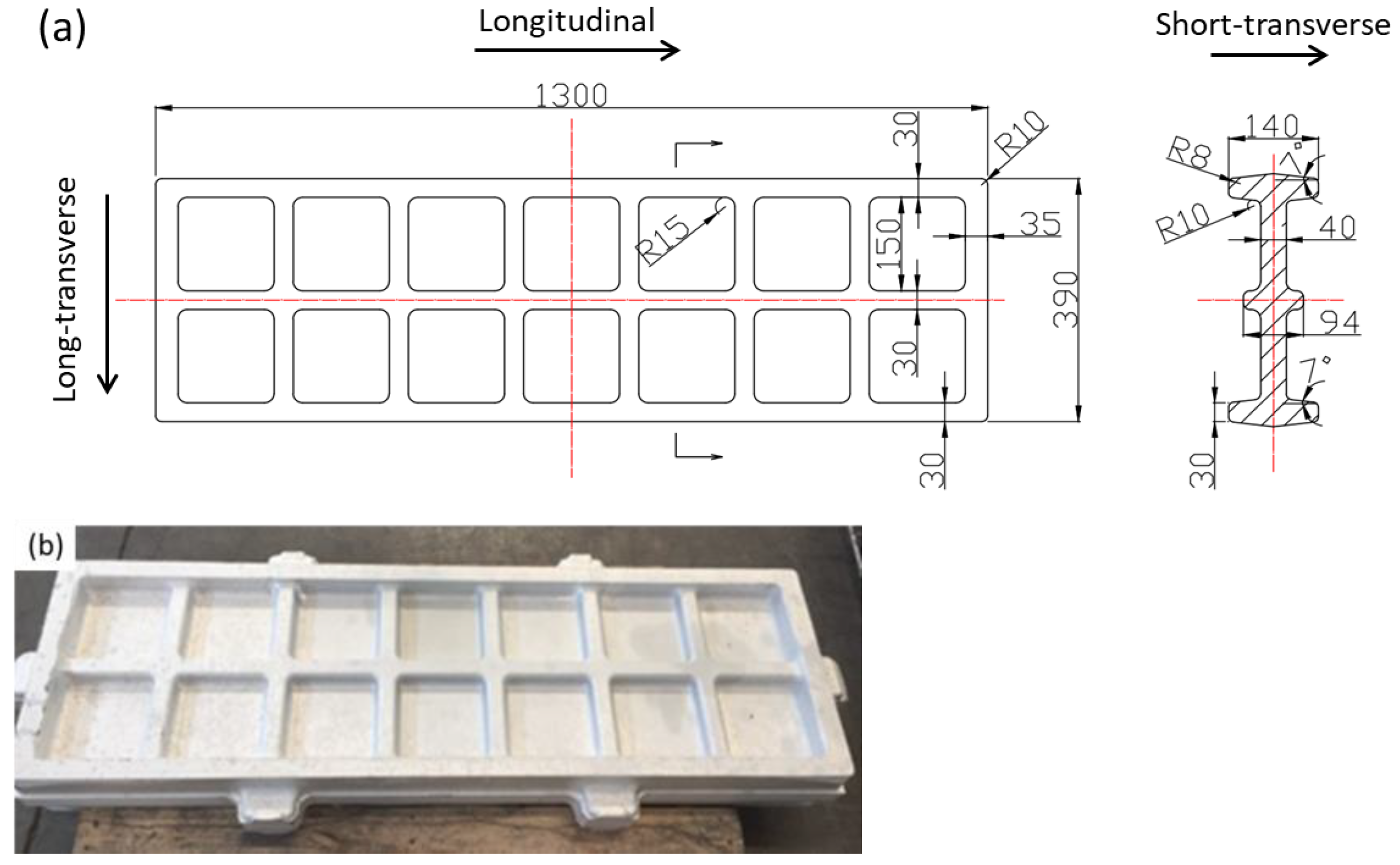
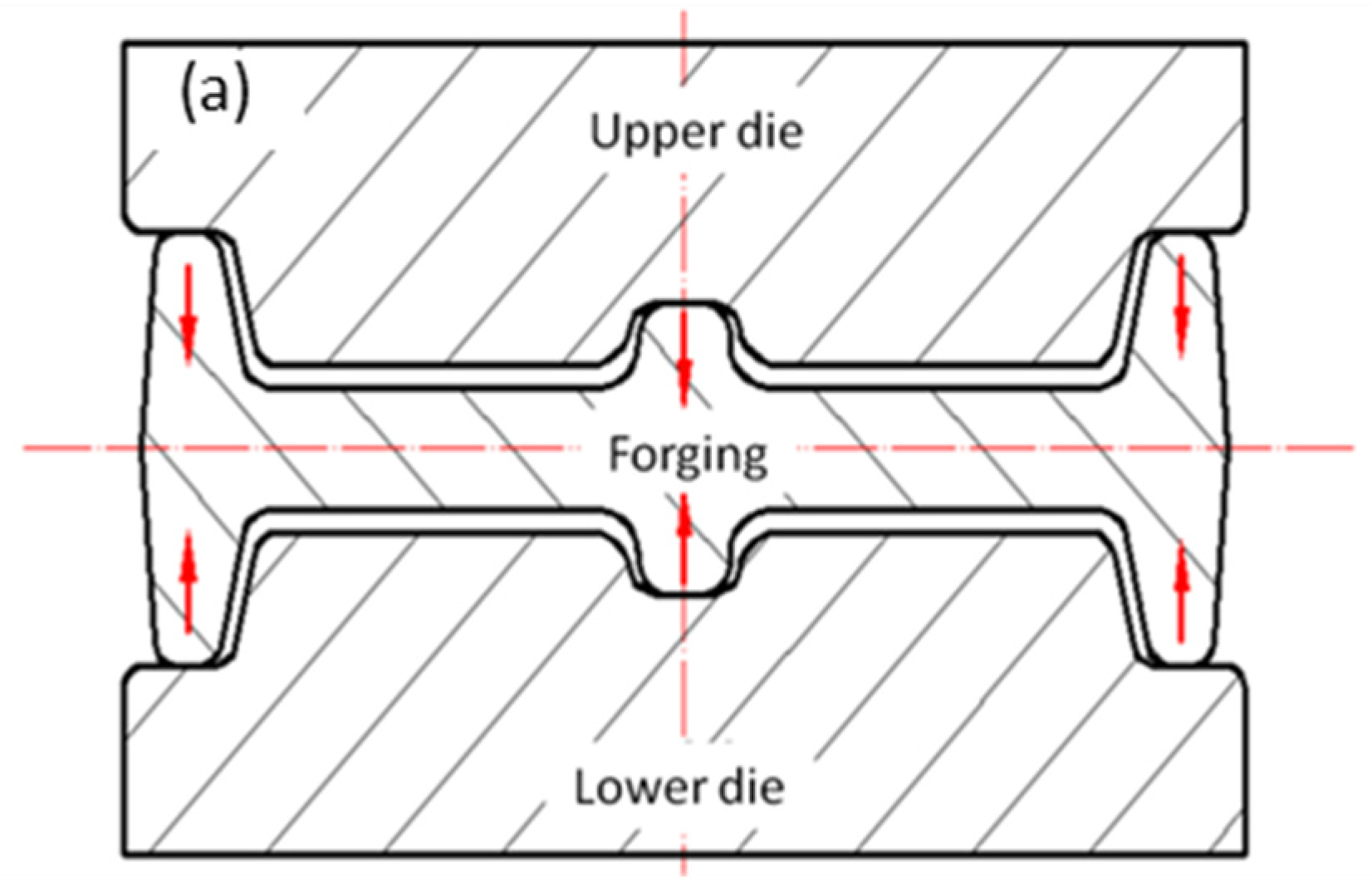

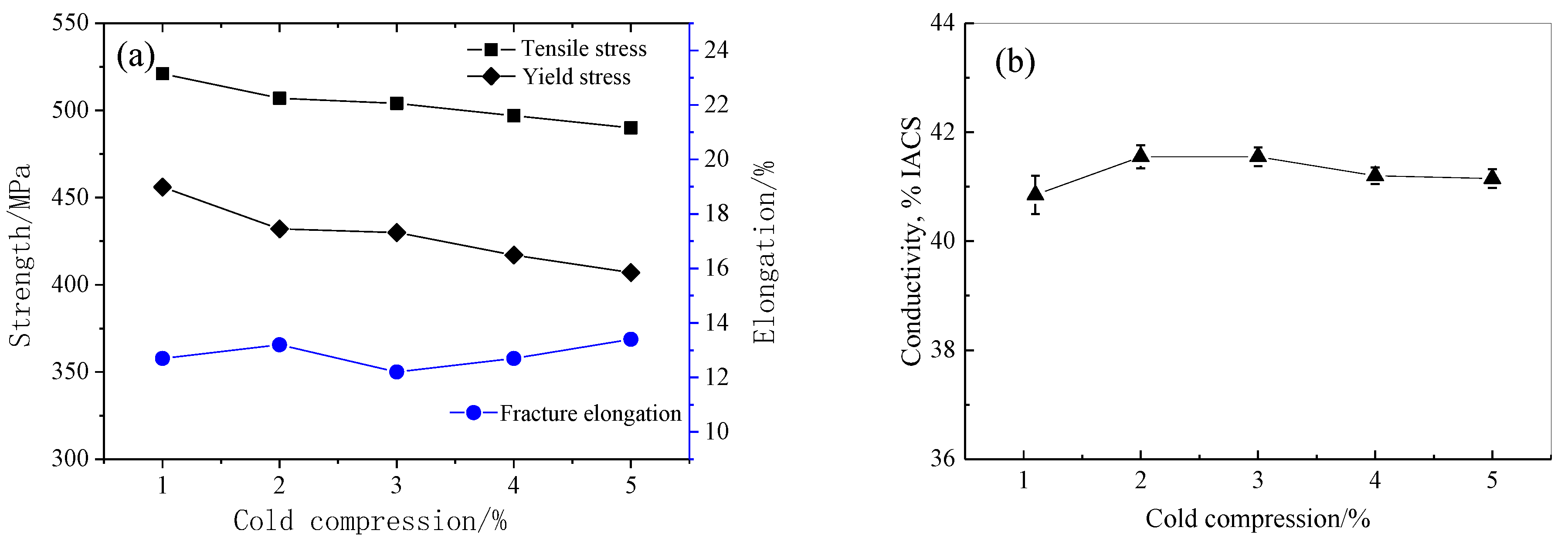

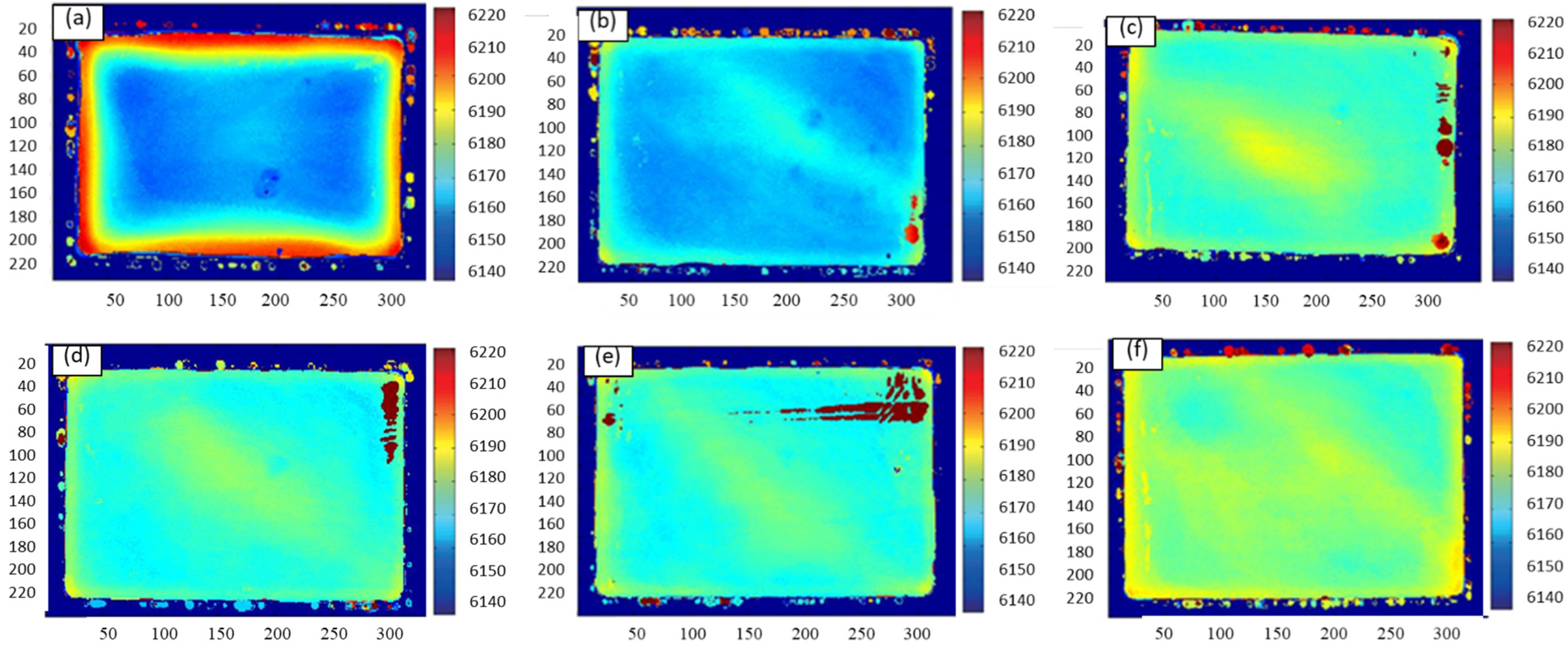
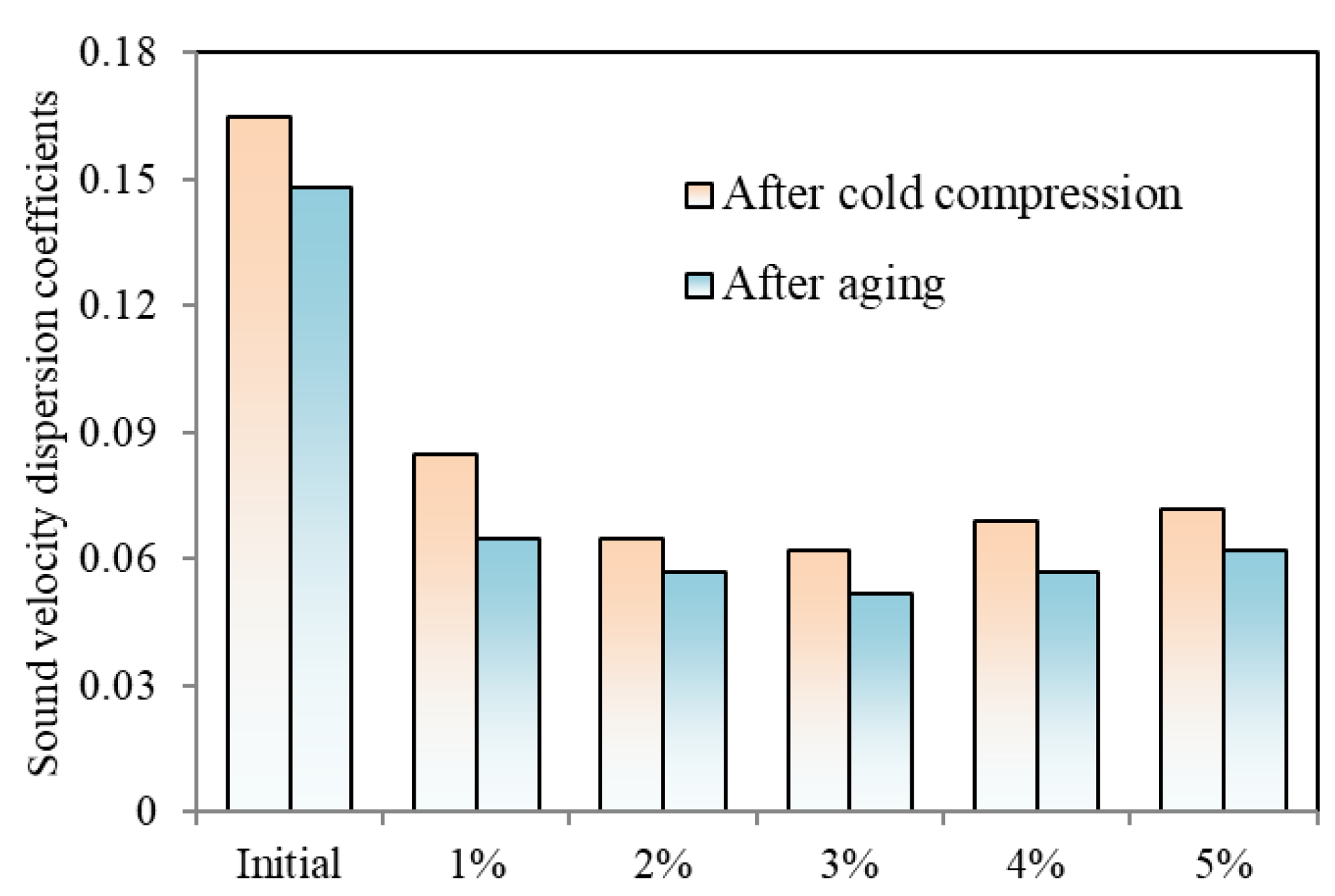
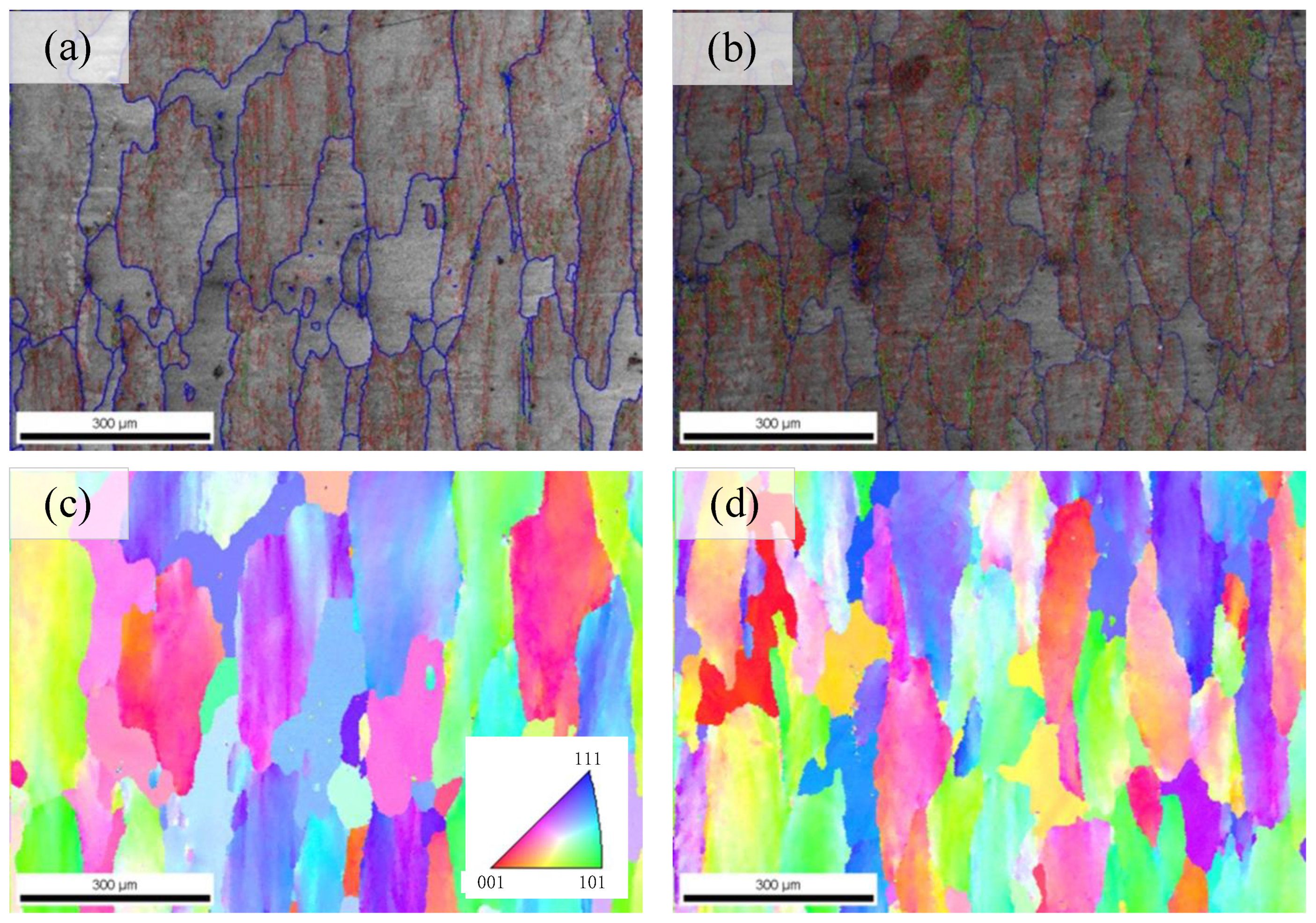
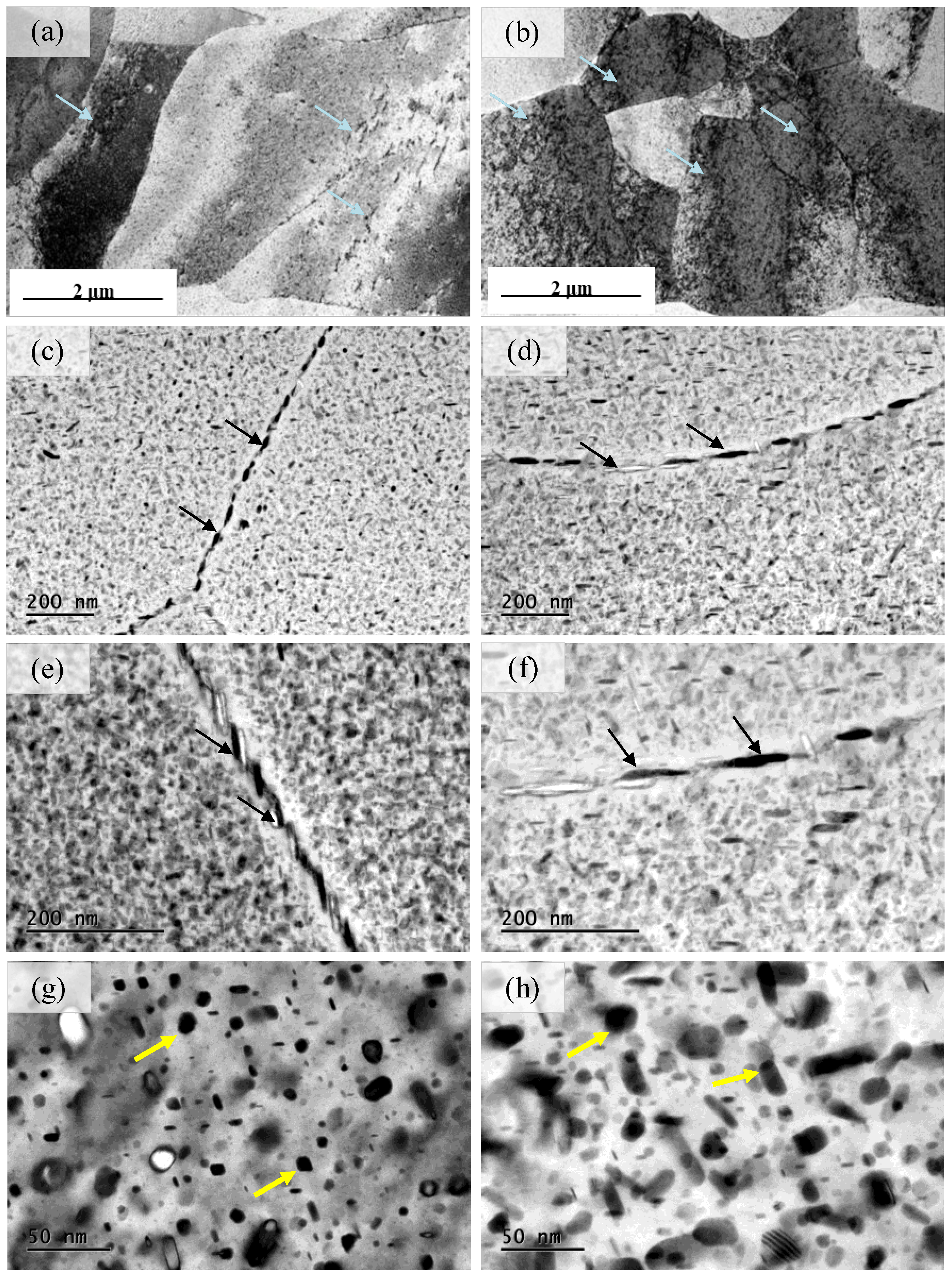
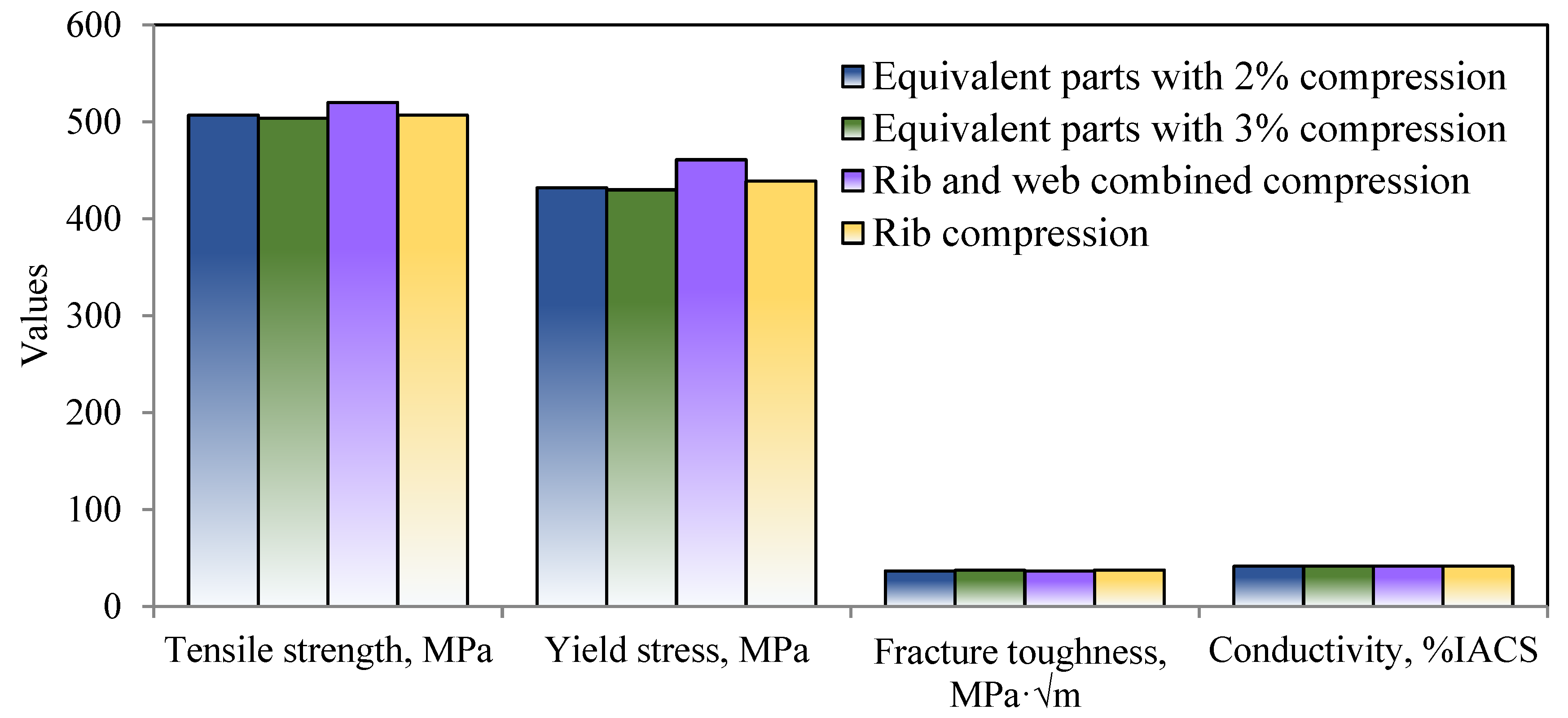

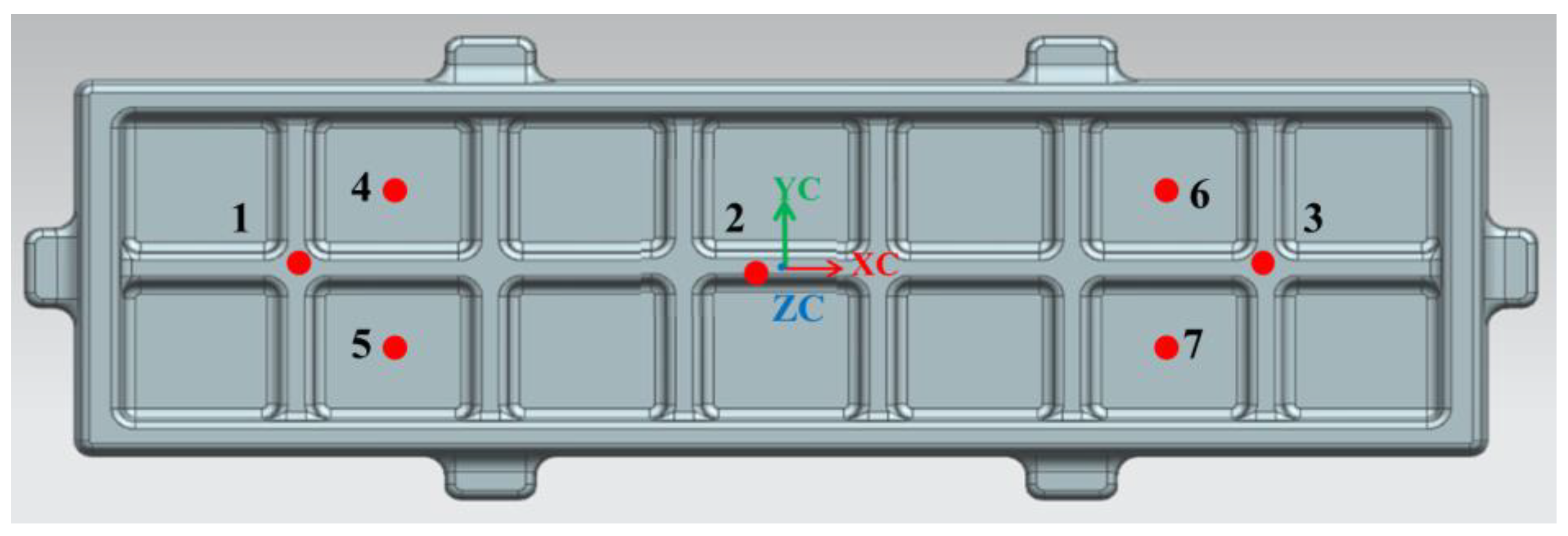
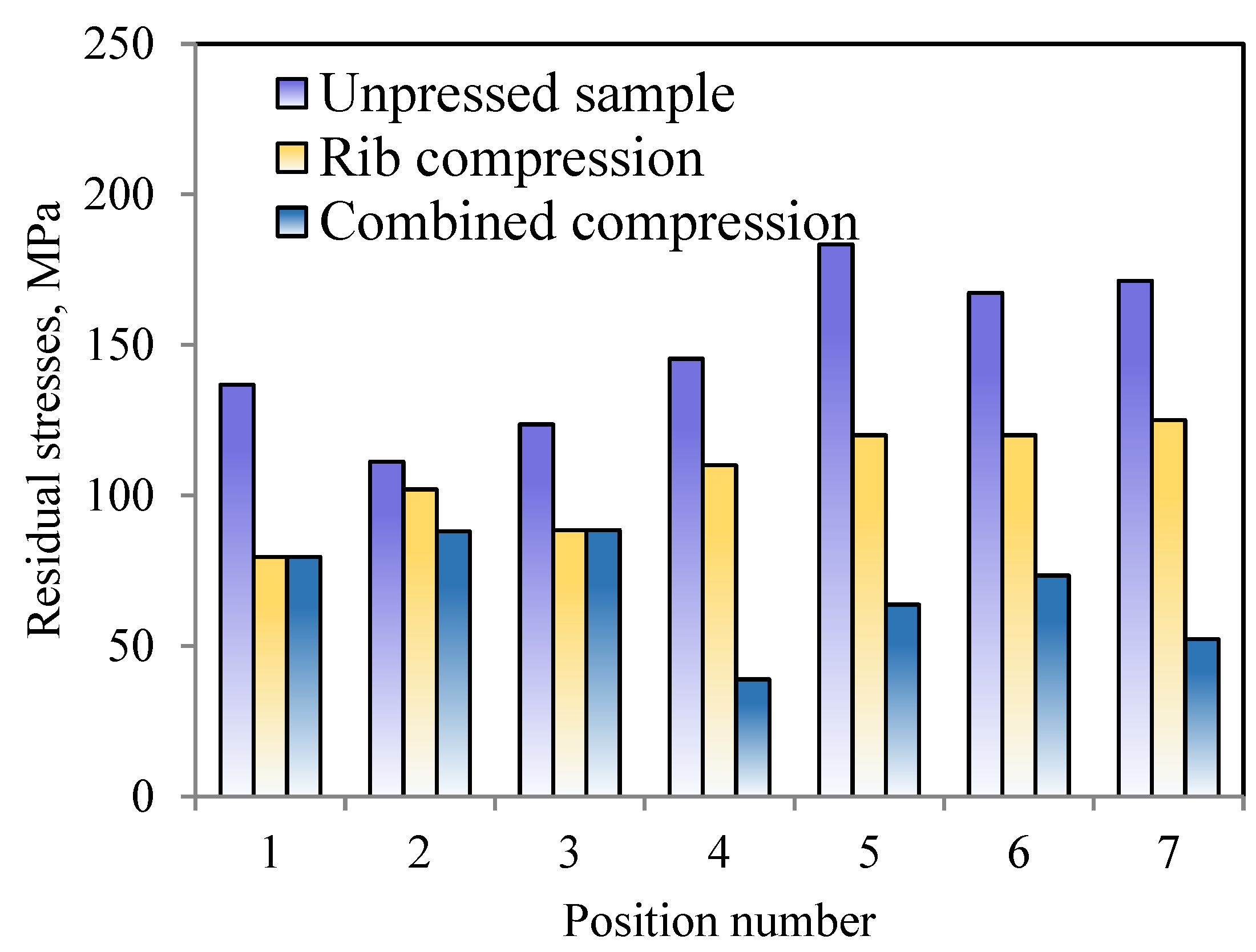
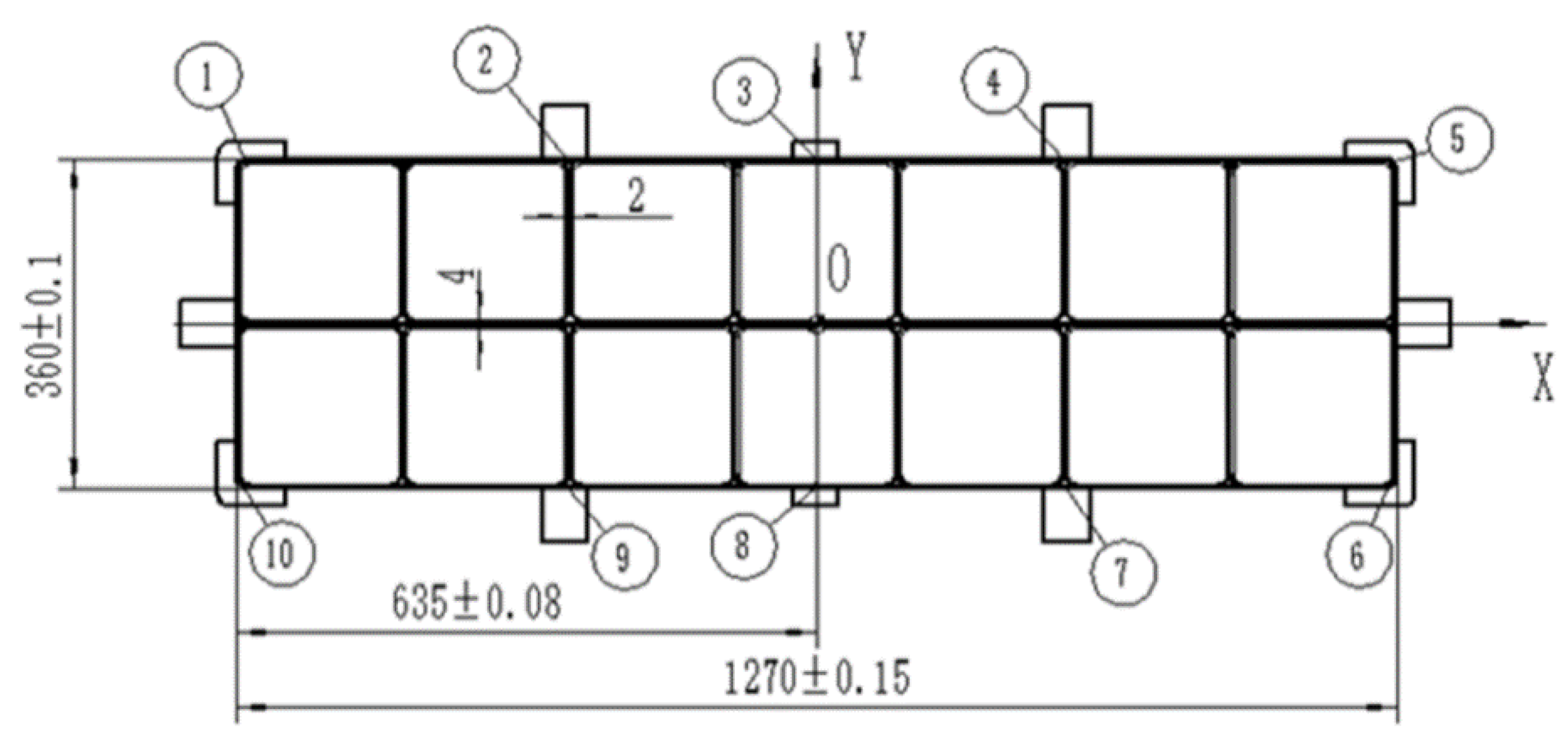
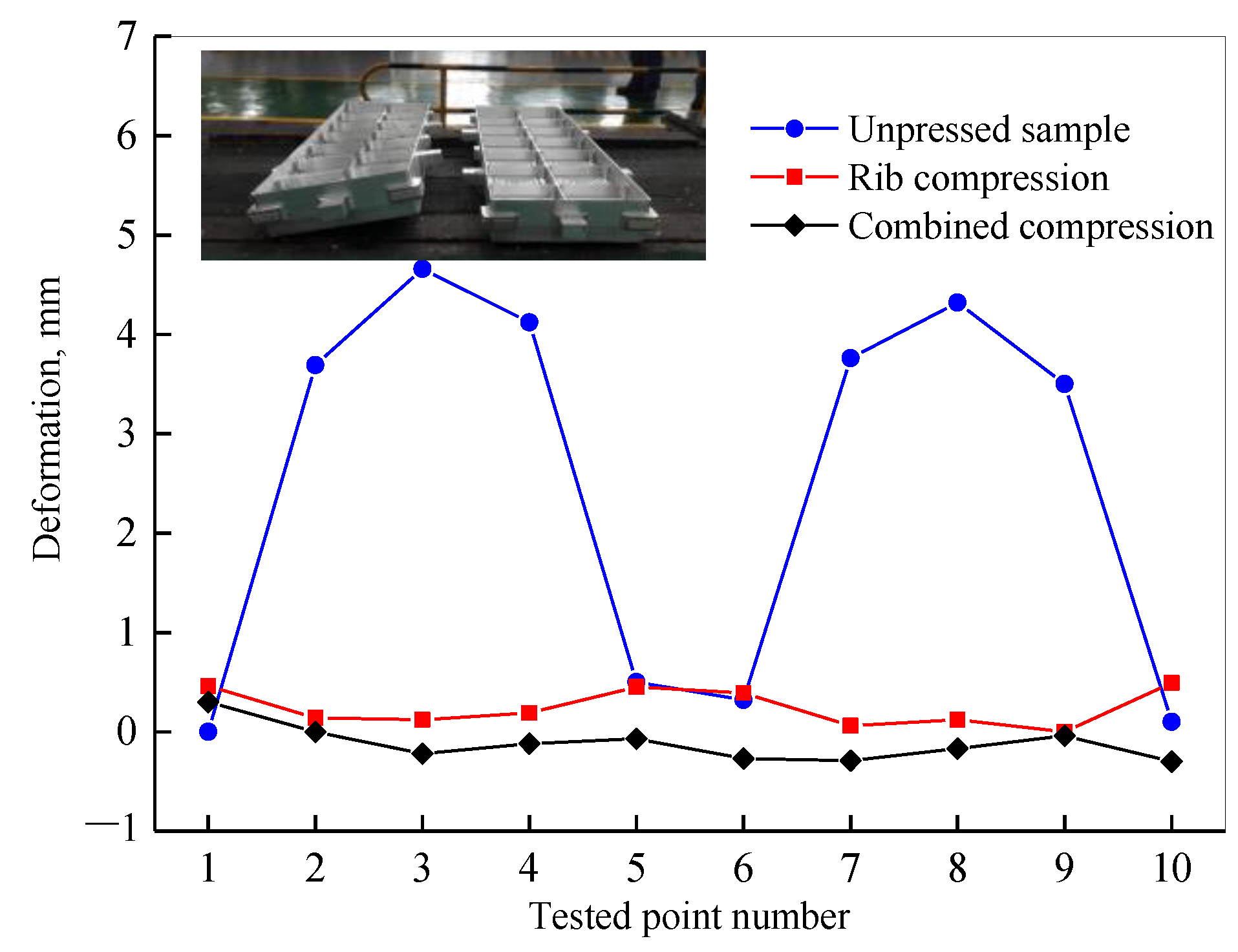
| Process | Parameters |
|---|---|
| Solution and quenching | 477 °C, 60 °C of water |
| Cold compression | 1%, 2%, 3%, 4%, 5% |
| Aging process | 121 °C × 6 h + 177 °C × 8 h |
Disclaimer/Publisher’s Note: The statements, opinions and data contained in all publications are solely those of the individual author(s) and contributor(s) and not of MDPI and/or the editor(s). MDPI and/or the editor(s) disclaim responsibility for any injury to people or property resulting from any ideas, methods, instructions or products referred to in the content. |
© 2023 by the authors. Licensee MDPI, Basel, Switzerland. This article is an open access article distributed under the terms and conditions of the Creative Commons Attribution (CC BY) license (https://creativecommons.org/licenses/by/4.0/).
Share and Cite
Li, H.; Wang, L.; He, W.; Cheng, L.; Chen, J.; Yi, L. Effect of Cold Pressing Deformation on Microstructure and Residual Stress of 7050 Aluminum Alloy Die Forgings. Materials 2023, 16, 5129. https://doi.org/10.3390/ma16145129
Li H, Wang L, He W, Cheng L, Chen J, Yi L. Effect of Cold Pressing Deformation on Microstructure and Residual Stress of 7050 Aluminum Alloy Die Forgings. Materials. 2023; 16(14):5129. https://doi.org/10.3390/ma16145129
Chicago/Turabian StyleLi, Huiqu, Liang Wang, Weiwei He, Liqiang Cheng, Junzhou Chen, and Linna Yi. 2023. "Effect of Cold Pressing Deformation on Microstructure and Residual Stress of 7050 Aluminum Alloy Die Forgings" Materials 16, no. 14: 5129. https://doi.org/10.3390/ma16145129
APA StyleLi, H., Wang, L., He, W., Cheng, L., Chen, J., & Yi, L. (2023). Effect of Cold Pressing Deformation on Microstructure and Residual Stress of 7050 Aluminum Alloy Die Forgings. Materials, 16(14), 5129. https://doi.org/10.3390/ma16145129





